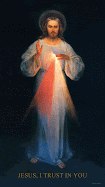 The Charlevoix Historical Society
The Charlevoix Historical Society recently received the donation of a rare and relevant book rescued from the toss-out bin of the University of Iowa library in Iowa City.
Timothy Barrett, research scientist and adjunct professor at the university’s Center for the Book, spotted the volume that was once in the possession of the Iowa State Library in Des Moines and marked “Withdrawn.”
It is a translation of the letters that Jesuit Father Pierre Francois Xavier de Charlevoix wrote to his friend the Duchess of Lesdiguieres in France describing his “Travels In North America,” 1720-1722. The book was published in London in 1763, two years after Father Charlevoix’s death.
Prof. Barrett wondered if the book might have some value. He consulted with his sister, Barbara Lucas, who has visited Charlevoix, to discuss what the next step might be. Together they determined that if the book belonged anywhere, it was the one place in the United States that received the name of the intrepid explorer, journalist, and important historian who gave Charlevoix County, later the town, his name.
They had it appraised, and found the book destined to be thrown out is worth $3,500. The book now resides at the Charlevoix Historical Society’s Harsha House Museum.
Prof. Barrett is one of the 2009 recipients of a MacArthur Foundation Fellowship, the no-strings $500,000 “genius award” granted to people in America outstanding in their fields. He has researched and duplicated the methods of historical hand papermaking. Prof. Barrett’s techniques were used in the fabrication of handmade archival paper used in the re-encasement of the Declaration of Independence, the Constitution, and the Bill of Rights at the National Archives in 2002.
The relevance of the book is contained in the following passage which Father Charlevoix wrote on July 31, 1721:
“I Departed from Michillimakinac (the Straits area) the Day before Yesterday at Noon, and I am detained here in a little island that has no Name . . .”
The only coastal island between the Straits and Grand Traverse Bay is Fisherman’s Island a few miles south of Charlevoix. He described having followed the coast by canoe and “ ... entering the Bay (Little Traverse), and was surprised at it. It is certain that this Bay, having no other Outlet, discharges itself into Lake Michigan ... I went at first five Leagues to the West, to get into Lake Michigan, I then turned to the South, and this is the only Route we have to take for a hundred Leagues to the River St. Joseph. ... Yesterday I went three leagues further, and a high wind obliged me to stop at this island.
He would have “turned to the south” at North Point/Mount McSauba.
Father Charlevoix wrote his next letter on Aug. 16:
“The first of August, after having sailed cross a Bay that is thirty Leagues deep (Grand Traverse), I left on the Right the Iles of Castor (Beaver Islands), which appeared to be very well wooded; and some Leagues further, on the Left, I perceived on an Eminence of Sand a Kind of Bush, which, when we are over against it has the shape of an Animal lying down. The French call if L’ours qui dort (the sleeping Bear), and the (Native Americans) the Bear lying down.”
Father Charlevoix does not mention making landfall in what would become Pine River/Charlevoix before traveling “three leagues further” to the island, but he does later describe the “condition,” as he called it, of rivers leading from the eastern Lake Michigan shore into inland lakes, a phenomenon he encountered repeatedly down the coast. The Lake Michigan-Round Lake-Lake Charlevoix chain may have been the first one he saw.
David Miles is co-director of the Charlevoix County Historical Society’s Harsha House Museum in Charlevoix. The museum is open 1-4 p.m. Tuesday through Saturday, through Dec. 31. It is located at 103 State St., one block west of Bridge Street next to the Congregational Church at Park Avenue in Charlevoix.
Link (here)
 Fr Anthony Symondson, a former Anglo-Catholic vicar who became a Jesuit priest, doubted however whether mass conversion was inevitable. He predicted that if an English Ordinariate relies on "shared churches and temporary buildings" he felt it would
Fr Anthony Symondson, a former Anglo-Catholic vicar who became a Jesuit priest, doubted however whether mass conversion was inevitable. He predicted that if an English Ordinariate relies on "shared churches and temporary buildings" he felt it would 








































